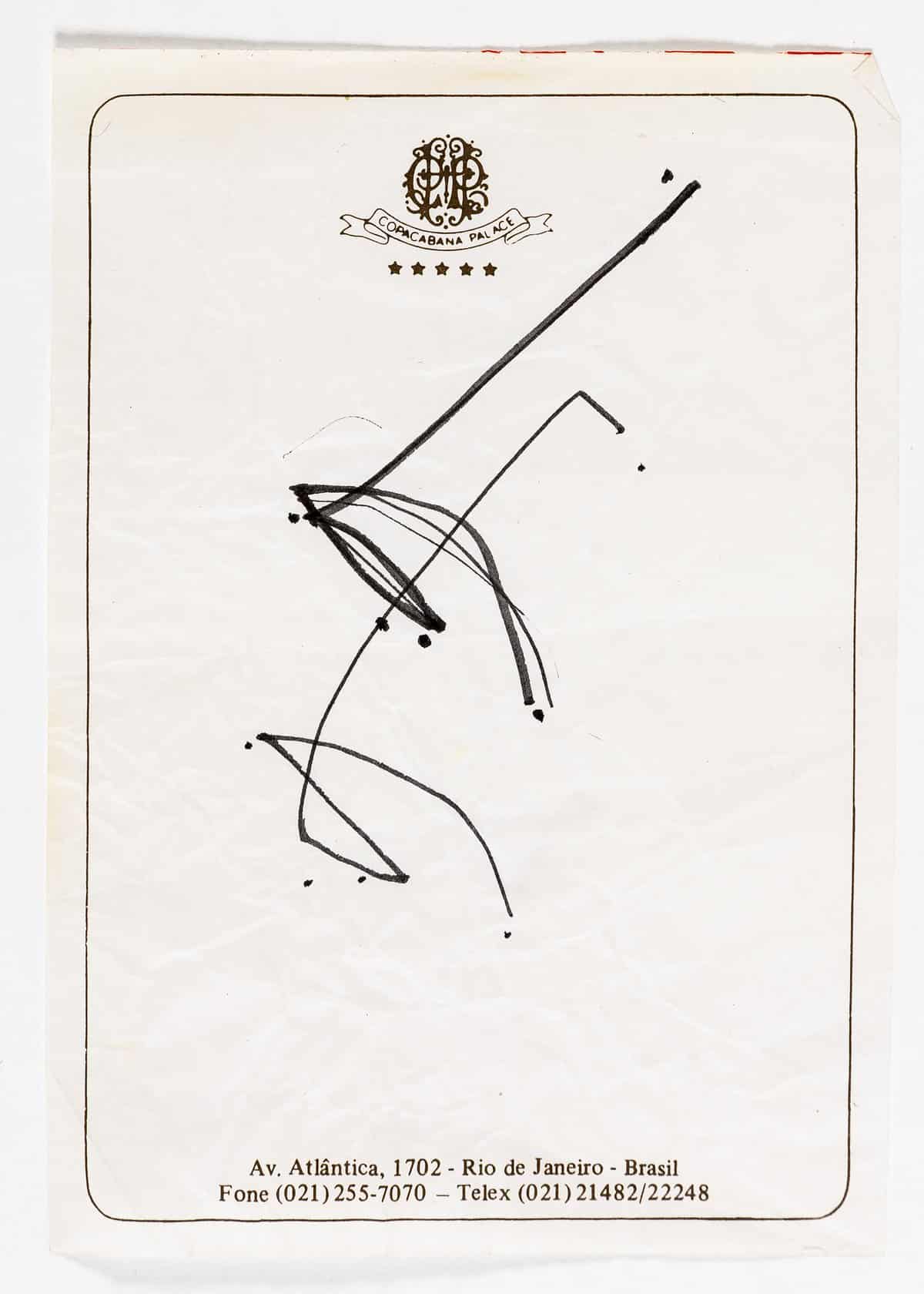Signature

It’s just a small loose sheet of paper ripped off a notepad. Along its margins, an elegant round-cornered brown border, once enclosing an anonymous blank space of empty expectancy, now ceremoniously frames a mysteriously attractive, harmonious, yet utterly cryptic mark, struck and left upon its surface: a signature.
By whose hand? The autograph must belong to somebody, possibly a celebrity, or, then again, to no one known. Its sign fails to signify its source, the tangible trace of the latter disturbingly detached from the former. Curiosity hurls into a hunt for clues. The letterhead brandishes the crest of Hotel Copacabana Palace, floating on the pedestal of five glorious stars. However, this concrete fact quickly dissolves into a sandy malleable matter of speculation. It might mean a rich entrepreneur, a charitable patron’s beneficiary, a rebellious kleptomaniac.
Maybe, as if by proxy, someone signed for something? Printed at the bottom of the page, the hotel’s contacts and address read like the label under a panting: ‘Rio de Janeiro – Brasil’. The imagination soars searching the city for what the sketch abstractly suggests, and, wishfully, finds it everywhere. But a drawing hand may also swiftly reach halfway across the world, or beyond it, unbound from representation of what exists into the projection of what still does not or never will.
Perhaps the page preserves the surviving simmers of a fluttering ephemeral idea, the unthinking spasm of the distracted hand alone, or simply a senseless scribble. Two identical lines swirl slightly offset into self-entanglement before shooting out straight towards freedom – or, to the contrary, does their straightness break into confusion and struggle out in a stumbling curve? One, thicker, consumes two frail failed attempts underneath its power, and resolutely confirms what its thinner twin had tentatively insinuated – or does it go the other way around, first a surge of certainty, then a humble second-guess?
Mystery compels curiosity, moved by the speculation of the imagination which, drawn into drawing these lines over and over again, wondering what they could be, wanders around what they could be. Here, not even the hand knows what it signed off on for the small loose sheet of paper to become.
André Patrão is a Postdoctoral Researcher in the lab of Architecture, Criticism, History, and Theory at the EPFL in Switzerland.
This text was entered into the 2020 Drawing Matter Writing Prize. Click here to read the winning texts and more writing that was particularly enjoyed by the prize judges.
